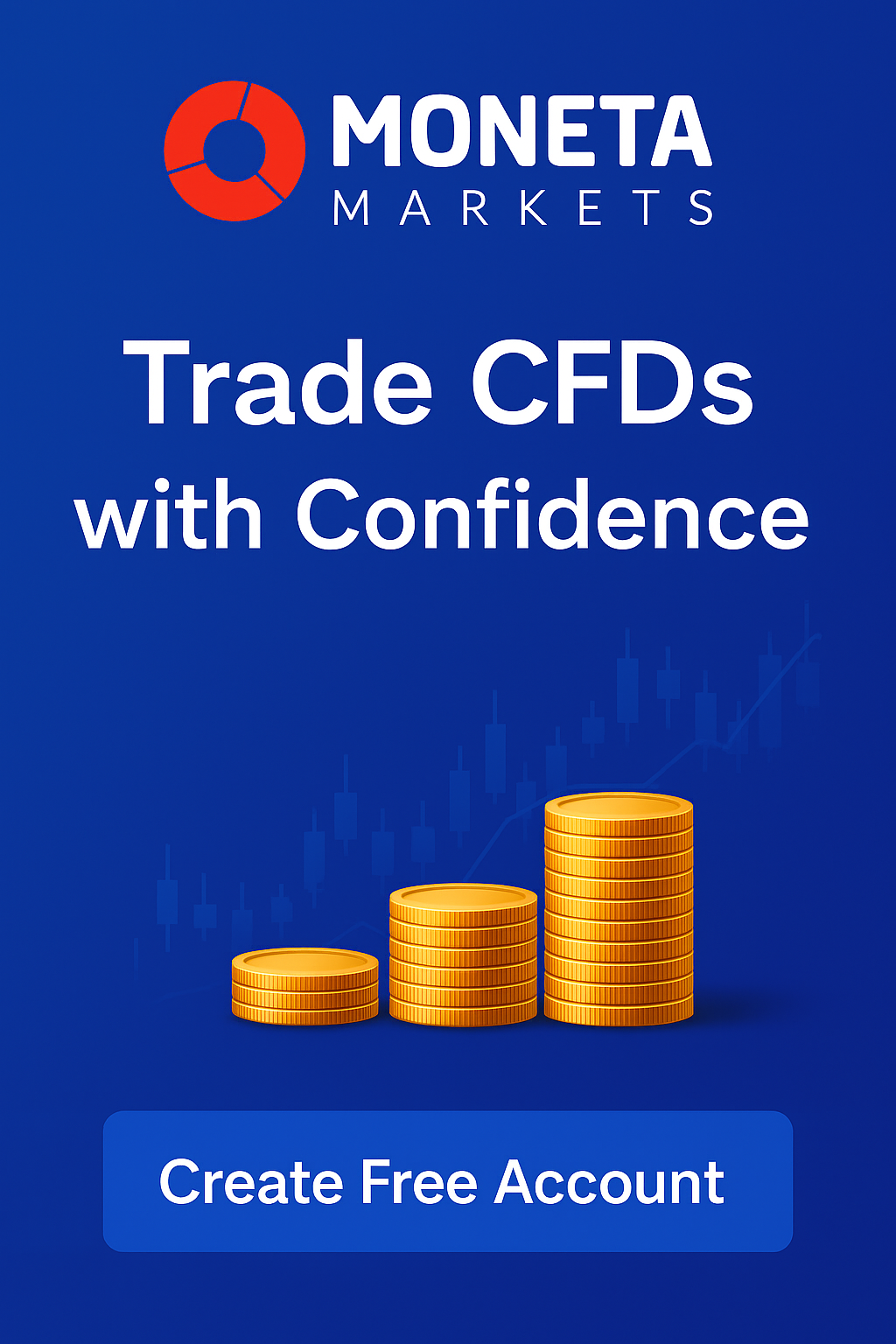CFD Trading Scams: How to Spot Them and Protect Your Investments
Feeling overwhelmed by the stock market? Maybe you just got your paycheck and are dreaming of smart investments, but U.S. stock fluctuations have you scratching your head. You’re not alone! This article is designed for Taiwanese investors like you, who want to explore opportunities like CFD trading but are worried about getting scammed.
How do you get started with U.S. stocks or CFDs safely? This guide will teach you how to spot CFD trading scams and protect your hard-earned money. We’ll break down the red flags, common tactics, and best practices to keep you safe.
Understanding CFDs: High Risk vs. Outright Scams
Contracts for Difference (CFDs) can seem like a quick path to profits, but it’s crucial to understand what they are. CFDs are essentially agreements to exchange the difference in the value of an asset between the time the contract opens and closes. Think of it as betting on which way a stock, commodity, or currency will move without actually owning it.

What Exactly are Contracts for Difference (CFDs)?
CFD trading allows you to speculate on the price movements of various assets. Instead of buying shares of a company, you’re entering a contract based on whether you think the price will go up or down. Imagine you think the price of TSMC stock will rise; you can enter a CFD contract reflecting that belief.
If you’re right and the price increases, you profit from the difference. If you’re wrong, you lose money. CFDs are popular because they offer leverage, meaning you can control a large position with a relatively small amount of capital. This can amplify both your profits and your losses.
Why CFDs Carry High Inherent Risk
Leverage is a double-edged sword in CFD trading. While it can magnify your gains, it can also dramatically increase your losses. For example, if a broker offers 10:1 leverage, you can control a position worth $10,000 with only $1,000 of your own capital.
If the market moves against you, even slightly, you could quickly lose your entire investment. This high level of risk makes CFDs unsuitable for novice investors who don’t fully understand the mechanics. Think of it as driving a sports car – exciting, but dangerous if you don’t know how to handle it.
The Key Distinction: Risky Trading vs. Fraudulent Activity
It’s important to differentiate between the inherent risks of CFD trading and outright scams. Legitimate CFD trading involves genuine market fluctuations and the possibility of loss due to your own trading decisions. This is different from a scam, where the platform is rigged, or your funds are stolen outright.
A legitimate CFD broker will be regulated and transparent about its fees and risks. A scam operation, on the other hand, will often promise guaranteed returns, use high-pressure sales tactics, and lack proper regulation. Knowing the difference is the first step in protecting yourself.
Red Flags: Spotting a Fake CFD Trading Platform
Identifying potential CFD trading scams early is critical to protecting your money. Scammers often use sophisticated websites and persuasive tactics to lure in unsuspecting investors. By knowing the red flags, you can avoid becoming a victim. Be especially careful if you are new to investing and still learning.

Unrealistic Promises & Guaranteed Returns
One of the biggest red flags is a promise of guaranteed returns or unusually high profits. No legitimate investment can guarantee a specific outcome because market conditions are always changing. If someone promises you can double your money in a short period with no risk, it’s almost certainly a scam.
Remember, investing always involves risk. Be wary of any platform that downplays or eliminates the possibility of losing money. If it sounds too good to be true, it probably is.
High-Pressure Sales & Urgency Tactics
Scammers often use high-pressure sales tactics to rush you into making a decision. They might claim a “limited-time offer” or pressure you to invest immediately before you have time to do your research. This sense of urgency is designed to bypass your critical thinking.
Legitimate brokers will give you time to consider your options. Never feel pressured to invest before you’re ready, and always take the time to do your due diligence. A common beginner mistake is to act impulsively based on fear of missing out (FOMO).
Lack of Transparency & Hidden Fees
A lack of transparency is another major red flag. Scam platforms often obscure their fees, making it difficult to understand how much you’re actually paying. They may also have vague or confusing terms and conditions. Always read the fine print.
Legitimate brokers are transparent about their fees and regulations. They’ll clearly explain all costs associated with trading, including commissions, spreads, and overnight fees. If a platform is secretive about its fees, proceed with extreme caution.
Unsolicited Contacts & Impersonation
Be suspicious of unsolicited emails, phone calls, or social media messages promoting CFD trading opportunities. Scammers often use these tactics to reach potential victims. They may even impersonate legitimate financial professionals or companies to gain your trust.
Always verify the identity of anyone offering you investment advice. Check their credentials and make sure they’re properly licensed and regulated. Never share personal or financial information with someone you don’t know and trust.
Common Tactics Used by CFD Scammers
CFD scammers use a variety of deceptive tactics to steal your money. Understanding these methods can help you avoid falling victim to their schemes. Be aware of these techniques to protect yourself.

Phony Software and Manipulated Trading Data
Some CFD scams involve using fake trading software that manipulates the data you see. The platform might show you winning trades initially to build your confidence, but then it will start generating losses to deplete your account. The prices you see may not reflect real market conditions.
Always be skeptical of platforms that seem too good to be true. Verify the data with independent sources and compare prices with other reputable brokers. If something seems off, it probably is.
The ‘Pig Butchering’ and Romance Scams
“Pig butchering” is a cruel scam where fraudsters build a relationship with you over time, often through dating apps or social media. They gain your trust before eventually introducing you to a fake CFD trading platform. The goal is to “fatten you up” (like a pig) before stealing your money.
Be extremely cautious of anyone you meet online who encourages you to invest in CFDs. Never invest money based on the advice of someone you’ve only met online, especially if it’s a romantic interest. Protect your heart and your wallet.
Refund Scams: Preying on Previous Victims
After losing money in a CFD scam, victims are often targeted by “refund scams.” Scammers posing as recovery agents or lawyers will offer to help you recover your lost funds, but they require an upfront fee. In reality, they’re just taking advantage of your desperation.
Be wary of anyone who promises to recover your money for a fee. Legitimate recovery services typically work on a contingency basis, meaning they only get paid if they successfully recover your funds. Never pay upfront fees to someone promising to get your money back.
Withdrawal Issues & Account Freezes
A common sign of a CFD scam is difficulty withdrawing your funds. The platform might make excuses, such as “technical issues” or “compliance requirements,” to delay or deny your withdrawal request. They may also freeze your account entirely, preventing you from accessing your money.
If you’re having trouble withdrawing your funds, it’s a major red flag. Contact the platform immediately and document all communication. If the problem persists, report the platform to financial regulators and seek legal advice.
Your Defense: How to Research a Legitimate CFD Broker
Protecting yourself from CFD trading scams starts with thorough research. Choosing a reputable and regulated broker is essential for a safe trading experience. Here’s how to do your homework.

Checking Regulatory Compliance & Licenses
The most important step is to verify that the CFD broker is regulated by a reputable financial authority. In Taiwan, you should check with the Financial Supervisory Commission (FSC). In other regions, look for regulators like the FCA (UK), ASIC (Australia), or CySEC (Cyprus).
A regulated broker is required to adhere to strict standards of conduct. This includes maintaining adequate capital, segregating client funds, and providing transparent pricing. Don’t trade with a broker that isn’t properly regulated.
Verifying Contact Information and Physical Presence
Check the broker’s website for complete and accurate contact information. This includes a physical address, phone number, and email address. A legitimate broker should have a real office and be easily reachable.
Be wary of brokers that only provide a P.O. Box or virtual office address. Try calling the phone number to see if you can speak to a real person. A lack of transparency about their physical presence is a red flag.
Reading Independent Reviews and Community Discussions (e.g., Reddit Forums)
Before choosing a CFD broker, read independent reviews and see what other traders are saying about their experiences. Websites like Trustpilot and ForexPeaceArmy can provide valuable insights. Also, check relevant forums on Reddit or other online communities.
Pay attention to both positive and negative reviews. Look for patterns of complaints about withdrawal issues, poor customer service, or unfair trading practices. A broker with consistently negative reviews should be avoided.
If You’re a Victim: Steps to Take After a CFD Scam
Discovering you’ve been scammed can be devastating. However, taking immediate action can improve your chances of recovering your funds and preventing others from becoming victims. Here’s what to do.
Gather All Evidence and Documentation
The first step is to gather all the evidence related to the scam. This includes emails, chat logs, trading records, and any other communication with the scammers. Also, collect any bank statements or payment confirmations showing the money you transferred.
Organize this information in a clear and chronological order. The more documentation you have, the stronger your case will be when reporting the scam. Act quickly, as evidence may disappear over time.
Report to Financial Regulators and Law Enforcement
Report the scam to the appropriate financial regulators in your jurisdiction. In Taiwan, contact the Financial Supervisory Commission (FSC). You should also file a report with local law enforcement, such as the police or cybercrime unit.
Provide them with all the evidence you’ve collected. The more information you can provide, the better chance they have of investigating the scam and potentially recovering your funds. This also helps protect others from falling victim to the same scam.
Contact Your Bank or Payment Provider
Contact your bank or payment provider immediately to report the fraudulent transactions. They may be able to reverse the charges or freeze the account used by the scammers. Provide them with all the details of the scam and the evidence you’ve collected.
Time is of the essence. The sooner you report the scam, the better your chances of recovering your funds. Your bank may also have fraud protection policies that can help you recoup your losses.
Seek Legal Counsel Specializing in Fraud Recovery
Consider seeking legal counsel from a lawyer specializing in fraud recovery. They can advise you on your legal options and help you pursue legal action against the scammers. They can also assist you in navigating the complex process of recovering your funds.
Be cautious of lawyers who promise guaranteed results or require large upfront fees. Choose a reputable attorney with a proven track record of success in fraud recovery cases. They can assess your case and advise you on the best course of action.
Future-Proofing Your Investments: Best Practices
Protecting your investments from scams requires ongoing vigilance and a commitment to financial education. By following these best practices, you can minimize your risk and make informed investment decisions. Stay proactive and informed.
Continuous Financial Education
The best defense against scams is continuous financial education. Stay informed about the latest scams and investment trends. Read books, articles, and blogs about personal finance and investing. Attend seminars and workshops to improve your knowledge.
The more you know, the better equipped you’ll be to spot red flags and avoid becoming a victim. Financial education empowers you to make smart investment decisions and protect your hard-earned money. Never stop learning!
Diversifying Your Portfolio Wisely
Diversifying your portfolio is a crucial strategy for managing risk. Don’t put all your eggs in one basket. Spread your investments across different asset classes, such as stocks, bonds, real estate, and commodities. This reduces your exposure to any single investment.
A well-diversified portfolio is less vulnerable to market fluctuations and scams. If one investment performs poorly or turns out to be a scam, the rest of your portfolio can help cushion the blow. Diversification is key to long-term financial security.
The Golden Rule: If It Sounds Too Good to Be True…
Remember the golden rule: If it sounds too good to be true, it probably is. Be skeptical of any investment opportunity that promises guaranteed returns or unusually high profits. Scammers often use these tactics to lure in unsuspecting victims.
Always do your research and consult with a trusted financial advisor before making any investment decisions. Don’t let greed or FOMO cloud your judgment. If something seems too good to be true, walk away. Your financial security is worth more than any potential profit.
In conclusion, being vigilant and informed is your best defense against CFD trading scams. Remember to research brokers thoroughly, be wary of unrealistic promises, and report any suspicious activity. Your financial safety is in your hands!
Empower Your Investment Journey: Download Our Essential Guide to Safe Online Trading Practices and Protect Your Financial Future. Join our community for regular updates and valuable resources to help you navigate the world of investing safely.


No responses yet